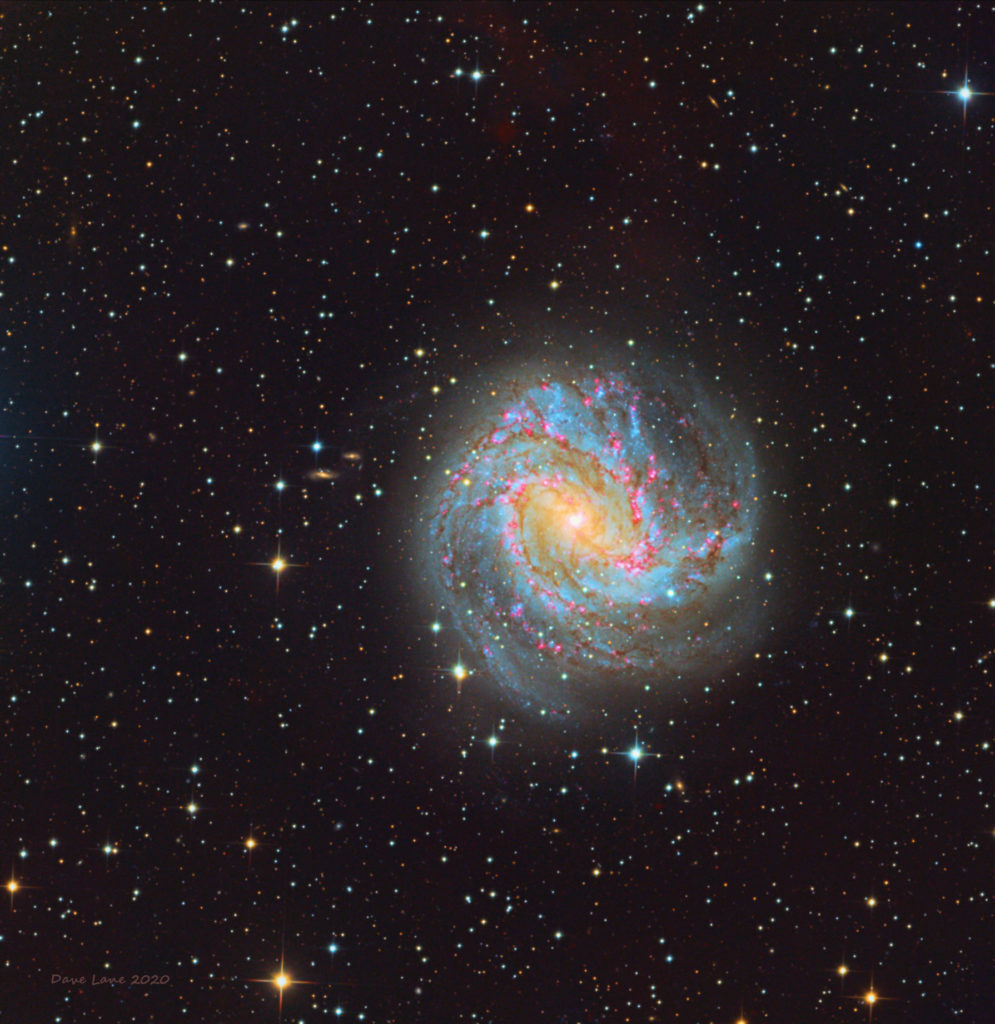Sky Report July 13 – July 19

This week Jupiter and Saturn lie exactly opposite the sun, Jupiter on the 14th and Saturn on the 20th. Being opposite the sun, they rise in the southeast as the sun sets in the northwest. Look for them beginning at about 10 PM as a pair, Jupiter being the brighter of the two. They’re visible the entire night, moving from east to west as the earth rotates from west to east, and they’re low in the northwest at the beginning of morning twilight.
Mars rises at 1 AM, and it’s brighter than any star and has an orange hue, so you can’t miss it, especially as there are no bright stars anywhere near it. At the beginning of morning twilight it’s high in the southeast.
Mars is passing through the constellation Cetus, the Whale, according to the way astronomers divide the sky. It’s in Cetus from the 8th through 26th.
The fourth bright planet visible tonight is Venus, which rises by 5 AM. Venus is far brighter than any star so you can’t miss it either, and its brilliance comes about because it’s close and is covered by highly reflective clouds. Telescopically Venus is a thin crescent. Our crescent moon is just above Venus on the morning of the 16th and to the left of Venus on the morning of the 17th. On those two mornings Venus and the moon might just fit within the view of very wide-angle binoculars.
The star that is virtually overhead at midnight is Vega, in the small constellation Lyra, the lyre – a type of primitive harp popular in ancient Greece. It’s the topmost of the three equally-bright stars that form the popular Summer Triangle. The other two are Deneb, to the lower left of Vega, and Altair, a bit lower and to the right. The Milky Way passes below Vega and above Deneb and Altair, at midnight stretching from the northeast to the southwest. The Milky Way is our galaxy of a few hundred billion stars, seen from the inside looking out. To the eye the Milky Way looks like it could be a cloud, but Galileo was the first to show, using his first telescope, that the Milky Way is actually made of stars beyond counting. And dust, we now realize. Notice the wide split in the Milky Way to the right of the summer triangle – that is huge clouds of dust blocking the light from stars beyond.
The Sky Report is presented as a public service by the Stellar Vista Observatory, a nonprofit organization based in Kanab, Utah, which provides opportunities for people to observe, appreciate, and comprehend our starry night sky. Additional information is at www.stellarvistaobservatory.org. Send questions and comments to
John@StargazingAdventures.org.






Comments are closed.